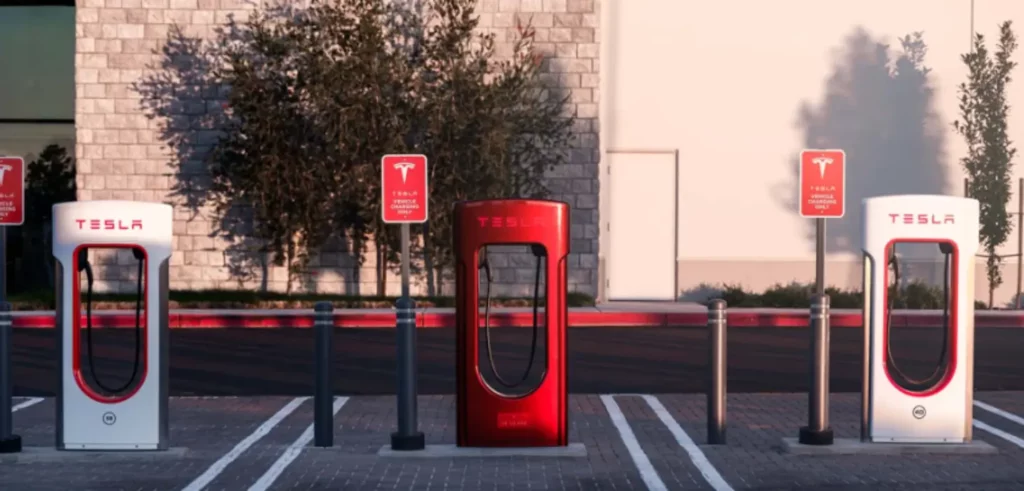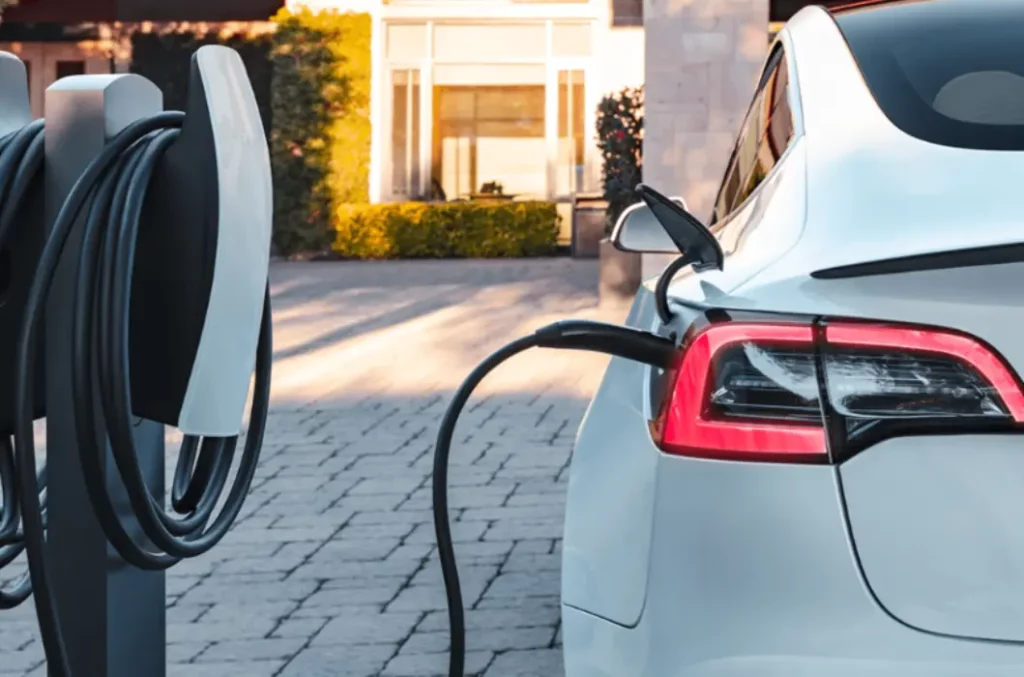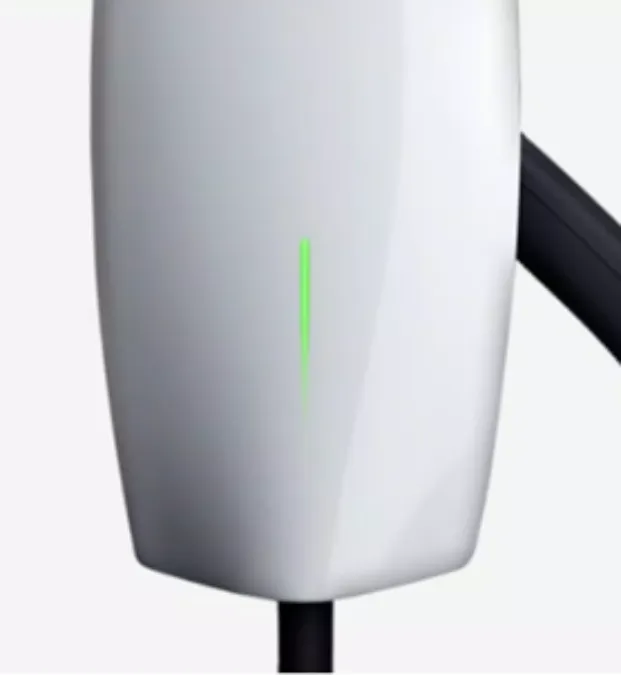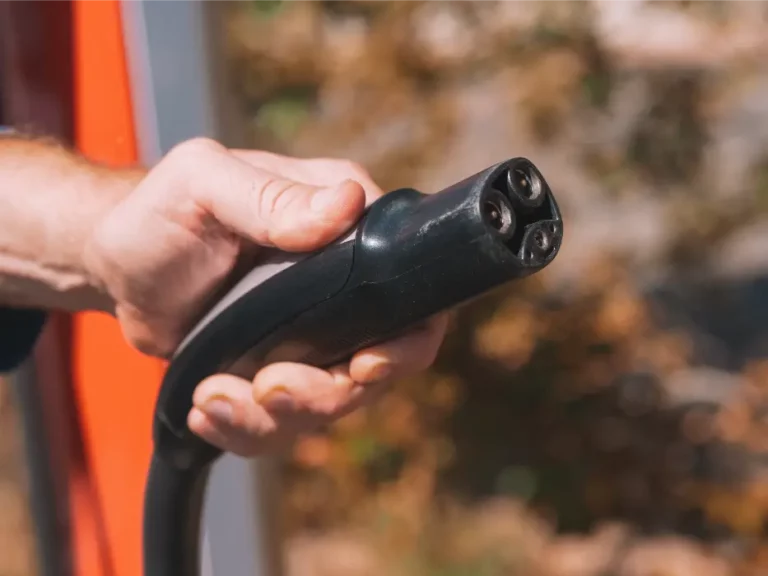Tesla, at the forefront of electric vehicle innovation, has not only revolutionized the automotive industry but has also paved the way for a comprehensive charging infrastructure. As Tesla owners embrace sustainable mobility, understanding the four types of Tesla chargers available is crucial.
This article will delve into the diverse world of Tesla chargers, ranging from Superchargers to home solutions, offering a comprehensive guide for both Tesla enthusiasts and those considering an electric future.
How Many Types of Tesla Chargers Are There?
Tesla offers four main types of chargers for its electric vehicles:
1. Superchargers:

Tesla Superchargers are a network of high-speed charging stations that are specifically designed for Tesla electric vehicles (EVs). They are the fastest Tesla chargers, capable of charging a Tesla to 200 miles of range in as little as 15 minutes.
Superchargers can provide up to 250 kW of power, which means that a Tesla can be charged from 0% to 80% in as little as 15 minutes. This is significantly faster than Level 2 chargers, which typically take several hours to charge a Tesla fully.
Superchargers are typically located along major highways and near amenities, making them ideal for long-distance travel. Tesla is constantly expanding its Supercharger network. There are now over 50,000 Supercharger stalls in over 35,000 locations around the world.
2. Destination Chargers:

Destination Chargers are slower than Superchargers, but they are still significantly faster than Level 2 Chargers. Destination Chargers provide up to 72 kW of power, which means that a Tesla can charge from 0% to 80% in as little as 2-4 hours.
Destination Chargers are typically located at hotels, restaurants, and other businesses where people are likely to stay for an extended period of time. The Tesla Destination Charger network is growing rapidly, with over 40,000 chargers located in over 30,000 locations around the world.
Check the location of all the Destination Chargers from here.
3. Wall Connectors:
Tesla Wall Connectors are a type of Level 2 home charger that is specifically designed for Tesla electric vehicles (EVs). They are the most convenient and affordable way to charge your Tesla at home, and they are essential for Tesla owners who drive their vehicles on a regular basis.

Wall Connectors can provide up to 48 kW of power, which means that a Tesla can be charged from 0% to 100% in as little as 4-5 hours. This is significantly faster than Level 1 chargers, which can take several days to charge a Tesla fully.
Installation and Costs: The cost of installation will vary depending on the electrician’s rates and the complexity of the installation. However, most installations will cost between $200 and $500.
The Wall Connector itself costs $550.
However, Tesla offers a $350 discount on the Wall Connector for Tesla owners who purchase a new Tesla vehicle.
Buy a Tesla Wall Connector from Amazon.
4. Mobile Connectors:
Mobile Connectors are portable chargers that can be plugged into any standard 120-volt or 240-volt outlet. Mobile Connectors are ideal for charging your Tesla on the go or in areas where there are no other Tesla chargers available.
Mobile Connectors are lightweight and compact, making them easy to store and transport. They are also easy to use – simply plug the connector into the outlet and the other end into your Tesla.
Mobile Connectors provide up to 32 amps of power, which means that a Tesla can be charged from 0% to 100% in as little as 8-10 hours. This is significantly slower than Level 2 and Supercharger stations, but it is still a convenient way to charge your Tesla when you are away from home.
They come with a package with the cable and the adapter itself and cost only $230 on the teslashop.
What are the Tesla Charging Levels?
| Level | Voltage | Amperage | Miles of range per hour of charging |
| Level 1 | 120V | 12A | 3-5 |
| Level 2 | 240V | 32A | 25-30 |
| DC Fast Charging | 480V | 250A | 200-300 |
Tesla currently offers 3 levels of charging:
- Level 1
This is the slowest type of charging and is typically used for overnight charging. It uses a standard 120-volt outlet and can add about 3-5 miles of range per hour of charging.
- Level 2
This is the most common type of charging for Tesla vehicles and uses a 240-volt outlet. It can add about 25-30 miles of range per hour of charging.
- Level 3
This is the fastest type of charging and is typically used for long-distance travel. It uses a direct current (DC) fast charger and can add about 200-300 miles of range in 30 minutes or less.
Choosing the Right Tesla Charger
depends on your specific needs and driving habits.
Consider the following factors when making your decision:
1. Charging Speed
If you have a long daily commute or frequently travel long distances, a faster charging option like the Wall Connector or Level 3 charging may be more suitable.
These options offer higher charging rates, allowing you to top up your battery quickly and efficiently. On the other hand, if you primarily use your EV for short trips or have access to overnight charging, the Mobile Connector or Level 2 charging may be sufficient.
2. Convenience and Accessibility
Consider the convenience and accessibility of charging options. The Mobile Connector provides portability and the ability to charge on the go, while the Wall Connector offers a dedicated charging station at home.
If you frequently travel and rely on public charging stations, the availability of Level 3 chargers, especially Tesla Superchargers, should also be a factor in your decision-making process.
3.Cost
Cost is an important consideration when choosing a Tesla charger. The Mobile Connector is included with Tesla vehicles, making it a cost-effective option for Level 1 and Level 2 charging.
However, if you prefer faster charging speeds and the convenience of a dedicated charging station, the Wall Connector will require an additional investment. It’s important to weigh the benefits against the cost to determine the best fit for your budget.
The Future of Tesla Charging
Tesla continues to expand its charging infrastructure to meet the growing demand for EVs. The Tesla Supercharger network, which offers Level 3 charging, is constantly expanding, with new charging stations being added regularly.
Tesla is also exploring innovative technologies to enhance the charging experience, including faster charging speeds and renewable energy integration.
As the adoption of EVs increases, the availability and accessibility of charging stations, including Tesla chargers, will continue to expand.
Whether you choose the Mobile Connector, or Wall Connector, or utilize public charging options, Tesla provides a variety types of Tesla chargers to meet the needs of its customers.
Frequently Asked Questions [FAQs]
Does Tesla have a level 4 charger?
In July Telsa confirmed that it will release version 4 of the superchargers. And Ot will charge at 350 kW.
Is Level 3 fast charging??
Right now the level 3 chargers are the fastest chargers you can get for charging your EVs.
Is Tesla charging AC or DC?
Tesla can use both AC and DC charging to charge their EVs.
How long does Tesla’s charge last?
Depending on the models the lowest-range Tesla, the Model 3, lasts for 267 miles the Model S, lasts for 405 miles. The Model S is the longest-range model.
How fast does a Tesla home charger charge?
If you use a wall connector to charge your Tesla, it will take eight to ten hours to fully charge your Tesla vehicle. But it depends on the model.

